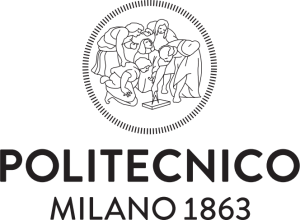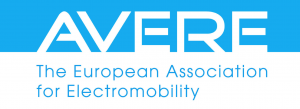OUR WORK
AHEAD has 11 dedicated work packages to achieve the project objectives.
Work package 1
Technological trends and scenario definition
Work package 1
Technological trends and scenario definition
WP1 focuses on analysing current and future vehicles and vessels usage patterns and charging behaviours, identifying and examining technological barriers and solutions for enabling flexibility from end-users, as well as a comprehensive regulatory framework analysis for electric mobility integration. Finally, scenarios and use cases will be developed that will be tested in the demonstrators.
Objectives of WP1:
- Analyse EVs, HDVs, and vessels recharging patterns and behaviours.
- Review technological barriers and ICT infrastructure standards for chargers and charging stations.
- Review current frameworks for the provision of flexibility services by EVs, HDVs, and vessels.
- Provide and define use cases and scenarios that will be implemented in the demonstrators.
Work package 2
Charging Infrastructure
Work package 2
Charging Infrastructure
- Describe the state-of-the-art of charging infrastructures for EVs, HDVs, and vessels.
- Assess suitable converter topologies and employ advanced semiconductor technologies for grid support.
- Evaluate grid service compliance of both individual and aggregated sets of slow chargers.
- Design AI tools to categorise charging dynamics based on vehicle models.
Work package 3
Flexibility Services
Work package 3
Flexibility Services
- Design flexibility programs adapted to the EVs needs and features.
- Model flexibility behaviour to be used in planning tools.
- Characterise, classify, and quantify the flexibility that can be provided by EVs.
- Develop a simulation tool allowing to test the adequacy of the flexibility services provided by EVs.
- Propose a contracting and pre-qualification process for participation of EVs in flexibility services.
Work package 4
Grid Models and Spatial Models
Work package 4
Grid Models and Spatial Models
WP4 will create planning methodologies for distribution and transmission grids, define EVSEs use classification and KPIs , run the validation of grid models and flexibility in planning tools , and host capacity spatial mapping models to support decision making.
Objectives of WP4:
- Simulate electric loads of EVs to validate grid model(s) for demo cases.
- Simulate flexibility services defined in WP3 into validated grid model(s).
- Implement decision-making map model for municipalities showing hosting-capacity level in the grids analysed.
Work package 5
ICT and Cybersecurity Requirements
Work package 5
ICT and Cybersecurity Requirements
WP5 will define ICT requirements in the EV value chain, create a threat model for EV charging and develop attack scenarios, and design cybersecurity requirements for cyberattacks, their prevention, detection and recovery.
Objectives of WP5:
- Build a map of the IT security measures for ICT e-mobility platforms.
- Develop an extensive threat model that enables a clear understanding of viable attacks against EV charging infrastructure.
- Develop requirements and define the necessary countermeasures to secure the EV charging infrastructure from the defined attack scenarios.
Work package 6
AI tool for planning of grids and charging infrastructure
Work package 6
AI tool for planning of grids and charging infrastructure
- Design the architecture of the proposed framework and developed scenarios, defining the inputs and outputs of the model.
- AI Model description.
- Description of the main KPIs and AI-Model Performance Evaluation Report.
Work package 7 | Nordic Europe demo
Combined service delivery from heterogeneous charging stations
Work package 7 | Nordic Europe demo
Combined service delivery from heterogeneous charging stations
- Demonstrate the feasibility and combined delivery of grid services with multi-brand chargers together with hybrid resources such as fast chargers with battery energy storage and DER.
- Measure customer acceptance of the charging services offered in the upgraded (workplace) and at the newly built charging station (rural-main road).
- Demonstrate the robustness of the infrastructure against grid data manipulation and malfunction.
- Assess the commercial spatial tool and update the AHEAD planning tools based on the lessons learned.
Work package 8 | Southern Europe Demo
AI-based planning tool and flexibility services from HDVs, fleets, and public transportation
Work package 8 | Southern Europe Demo
AI-based planning tool and flexibility services from HDVs, fleets, and public transportation
- Review of the actual situation of the DSO, public transport and fleet management in the demo sites.
- Test and performance assessment of the AI based tool for the DSO planning operations.
- Demonstrate EVs, HDVs, and vessels operation considering flexibility services.
- Demonstrate the robustness of the infrastructure against grid data manipulation and attacks.
Work package 9 | Western Europe Demo
AI Tools for the Seamless Integration and Coordination of Public and Private Charging Infrastructures
Work package 9 | Western Europe Demo
AI Tools for the Seamless Integration and Coordination of Public and Private Charging Infrastructures
- Assess the challenges and opportunities of massive deployment of EVSEs in parking lots.
- Demonstrate and assess the impacts of using wireless EVSEs.
- Assess the performance of AI-based tools for planning and coordinating EVSEs at the city level.
- Assess the challenges and benefits of massive boat electrification of maritime-tourism activities.
Work package 10
Dissemination
Work package 10
Dissemination
WP10 will develop a communication and dissemination plan, defining the tools and channels for the project to ensure a strong awareness of its ongoing work and dissemination of results to a variety of stakeholders. AHEAD will cluster with other EU projects and other initiatives to address the scientific community and maximise visibility of the results. The AHEAD exploitation strategy will closely align with the dissemination strategy, identifying and evaluating the exploitation pathways to ensure the AHEAD results and solutions can be scaled.
Objectives of WP10:
- Develop and implement a communication and dissemination plan as well as the tools and channels for outreach and dissemination.
- Ensure links with related EU projects and initiatives.
- Identify and prepare exploitation and use of results.
- Contribute, upon invitation by the CINEA, to common information and dissemination activities to increase the visibility and synergies between Horizon Europe supported actions.
Work package 11
Project Management
Work package 11
Project Management
- Guarantee effective and timely project implementation.
- Control the quality and manage the risks of the project.
- Maintain timely and necessary interaction with the EC and other interested parties.